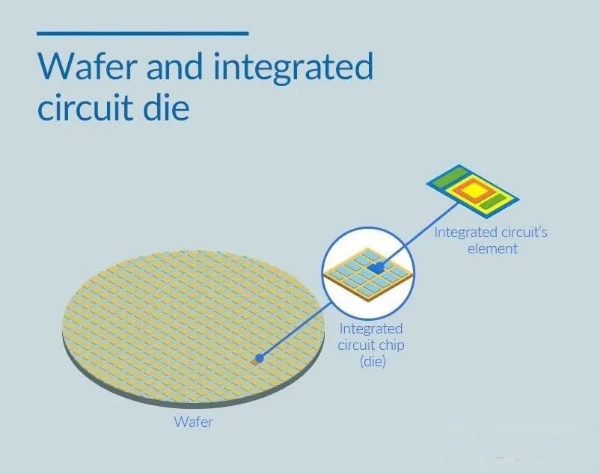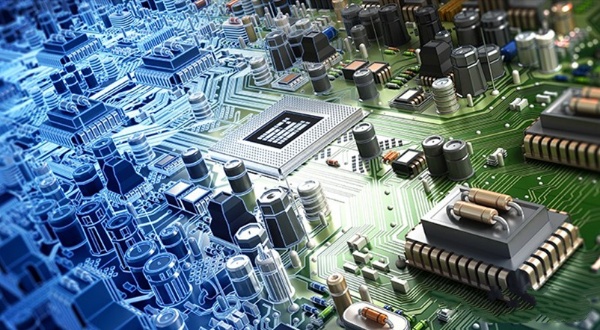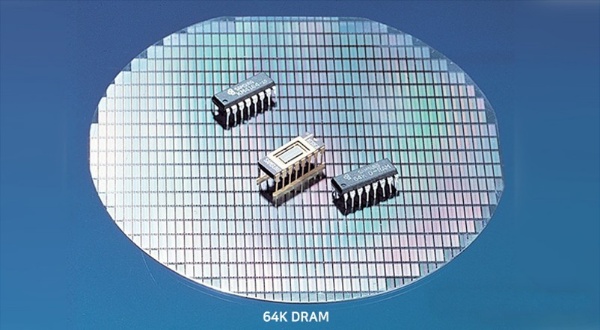Service hotline
+86 0755-83044319
release time:2023-10-11Author source:SlkorBrowse:14944
During the "oxidation" step, an oxide layer (SiO₂) is formed on the surface of the wafer. The wafer is the most important material in semiconductor processing. The oxide layer protects the surface of the wafer from impurities, and the next step is to design the semiconductor circuit.
What does the circuit in a semiconductor chip look like? Let's learn together!

Micro semiconductor chips contain thousands to millions of electronic components (diodes, transistors, capacitors, resistors) within them. How are these semiconductor integrated circuits made? Let's first understand a bit of the history of semiconductor development.
Transistors: Where the Electronic Revolution Began
In 1947, researchers at Bell Laboratories, the central research facility of the largest telecommunications company in the United States, American Telephone and Telegraph (AT&T), invented the transistor. This invention was initially called the "amplifier" and later renamed as the transistor.

Transistors quickly became the core components of electronic products. However, with technological advancements, electronic products started to take on more and more functionalities. This led to an exponential growth in the number of components that needed to be interconnected, ranging from transistors and resistors to diodes and capacitors. These contact points also became the cause of most product failures.
In 1958, engineer Jack Kilby of Texas Instruments (TI) developed a solution. Complex electronic components would be miniaturized and then printed as circuits onto a small surface. These circuits would be stacked on top of each other, giving birth to integrated circuits (ICs).

Integrated Circuits (ICs): A Revolution in Electronics
Transistors, resistors, diodes, and capacitors, which make up semiconductor integrated circuits (ICs), are interconnected to compute and store electrical signals.
Let's take a closer look at the function of each component class. Transistors act as switches to open and close the power supply, while capacitors accumulate and store charges. Resistors regulate current, and diodes maintain signal uniformity.
Semiconductor integrated circuits are manufactured by integrating all circuit components into intricate and complex multilayer patterns. These intricate circuits are impossible to manually draw, so a method similar to developing photographic images is used.

The development of integrated circuits stimulated the progress of the semiconductor industry. Moving from manually connecting individual components to integrated circuits meant smaller product form factors and lower power consumption, while achieving faster data processing. Using photo-lithography technology meant that semiconductor ICs were reliable and beneficial for large-scale production.
In the 1960s, the late Korean-American engineer at Bell Labs, Dr. Dawon Kahng, and Martin Atalla developed the "MOS-FET" (Metal-Oxide-Semiconductor Field-Effect Transistor). Integrated circuits truly began to shine from here.
MOS-FET solved the limitations of traditional bipolar-junction transistors, which were difficult to manufacture and consumed a lot of power.
In 60 years, semiconductors have evolved from transistors to integrated circuits and MOS-FETs. Further innovation in the future is exciting and awaited.
In the next article, we will introduce how these intricately designed circuits are drawn onto wafers using etching processes.









Site Map | 萨科微 | 金航标 | Slkor | Kinghelm
RU | FR | DE | IT | ES | PT | JA | KO | AR | TR | TH | MS | VI | MG | FA | ZH-TW | HR | BG | SD| GD | SN | SM | PS | LB | KY | KU | HAW | CO | AM | UZ | TG | SU | ST | ML | KK | NY | ZU | YO | TE | TA | SO| PA| NE | MN | MI | LA | LO | KM | KN
| JW | IG | HMN | HA | EO | CEB | BS | BN | UR | HT | KA | EU | AZ | HY | YI |MK | IS | BE | CY | GA | SW | SV | AF | FA | TR | TH | MT | HU | GL | ET | NL | DA | CS | FI | EL | HI | NO | PL | RO | CA | TL | IW | LV | ID | LT | SR | SQ | SL | UK
Copyright ©2015-2025 Shenzhen Slkor Micro Semicon Co., Ltd